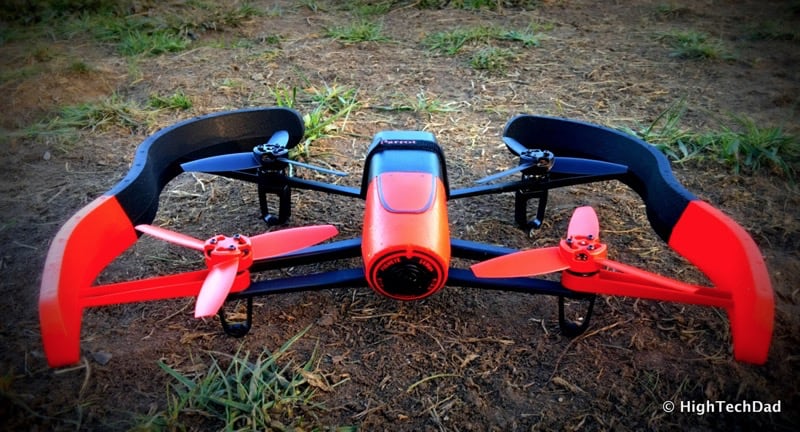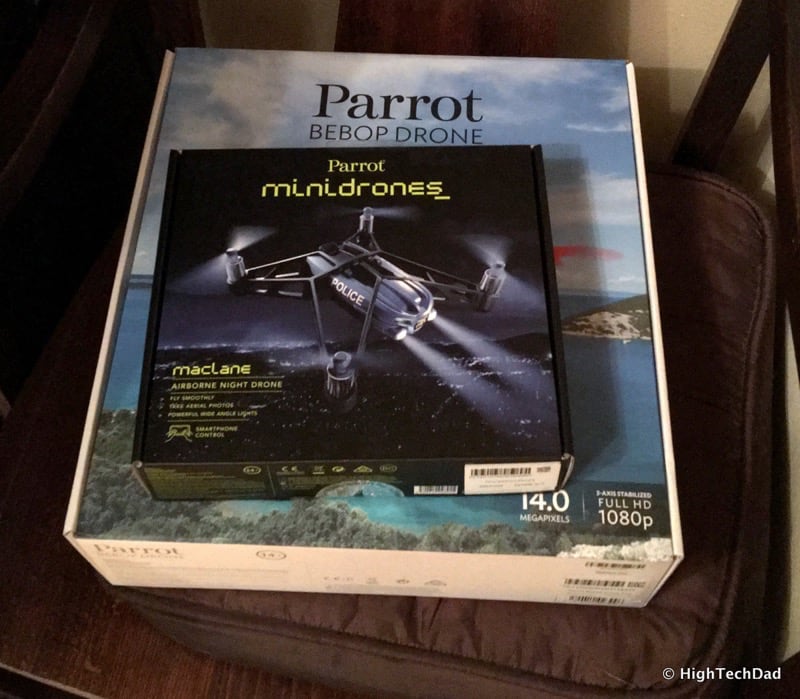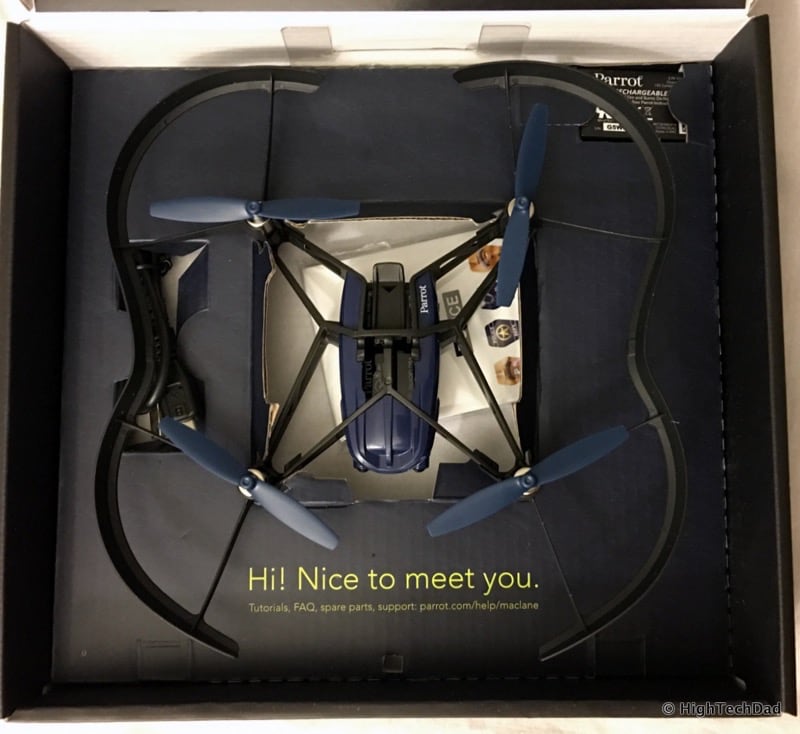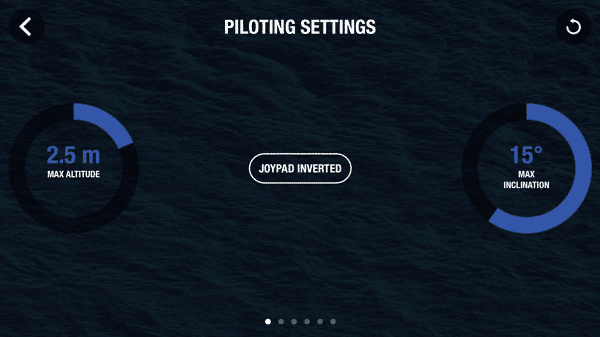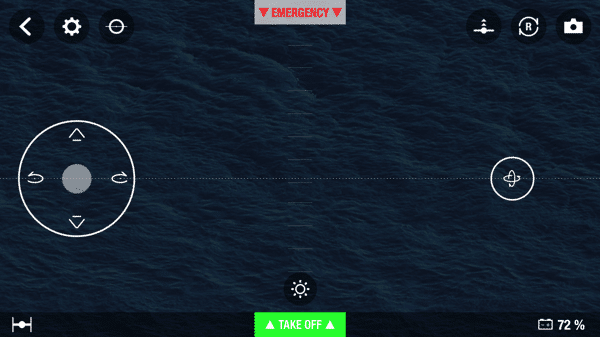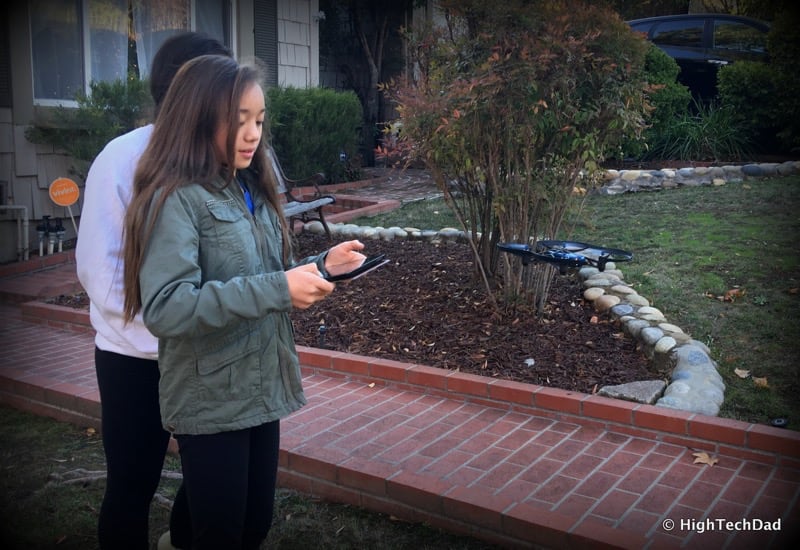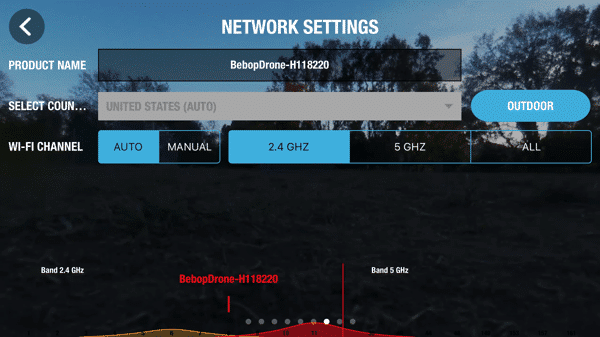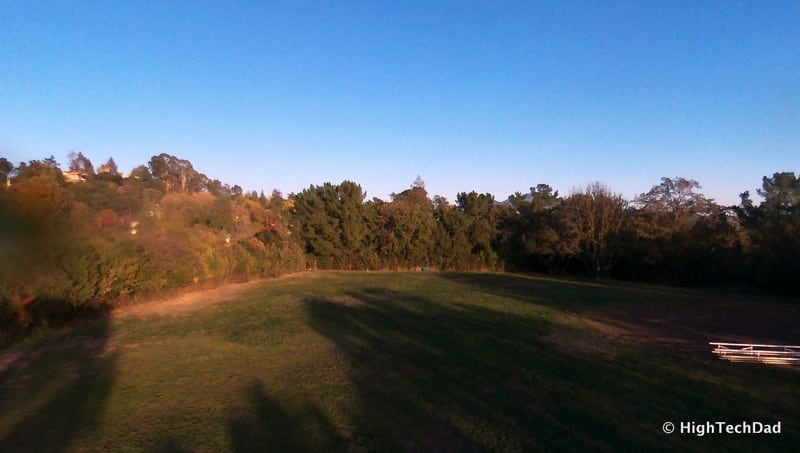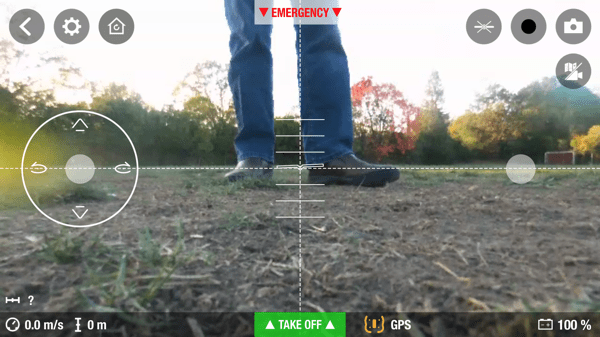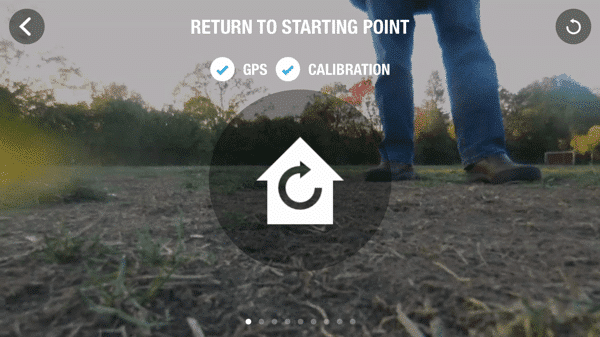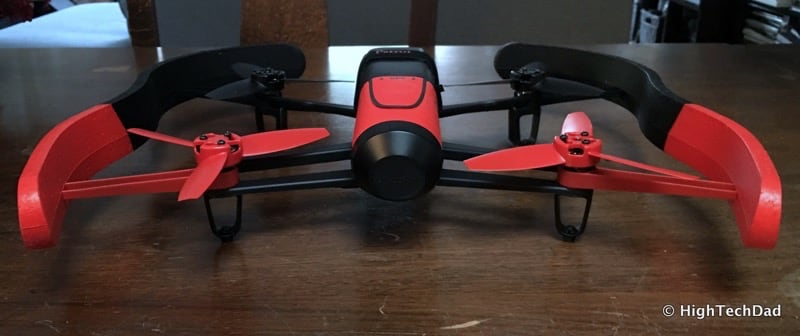Humans have always wanted to fly and see like a birds, to soar and swoop while gazing down or far off into the horizon. For the most part, flight has been restricted to professional pilots, hand gliders, skydivers, hot air balloon, RC hobbyists and the like, that is until drones flew into the scene and landed with consumers. Now you can pick up a drone at a local consumer electronics store or online and leave gravity behind. Personally, I have long had the desire to try out a drone, and in fact, I was able to do so many years ago when Parrot announced the AR.drone. The drone marketplace has matured in the five years since I flew the AR.drone. Not only has the technology improved, allowing for HD video, longer flight times, more accurate flying and even better entry-level drones even for kids, but also there is increased scrutiny, privacy concerns and even new regulations being legislated by the Federal Aviation Administration (FAA) requiring drone owners to register their drones. While regulations are coming because of concern for public safety, this should not prevent you from learning how to safely fly drones, either as adults or as children (with adult supervision). I recently got to introduce droning to my daughters, using two new drones from Parrot, specifically the Parrot Bebop and the Parrot MiniDrone Night Drone.
What was fun for me about this airborne journey was the learning process. The two drones offered to me by Parrot provided an opportunity to both be child-like (for the learning process) and an adult (for the safety and teaching process). These two Parrot drones are much like a parent and child, one is larger and one smaller, one has many complex features and controls and one is much simpler to fly, but with both, you always need to be safe and careful.
Let’s first take a look at the new Parrot MiniDrone. I’m choosing this drone first simply because it is the easiest one to learn with as well as to let your kids try. For starters it is quite small, almost toy-like. But that doesn’t mean that it isn’t fun nor that it is feature-limited in any way. The kit comes with the Minidrone, some removable shields that cover the propellers to make flying a bit safer, a micro-USB charging cable, stickers and one battery. The drone itself measures about 7” x 7” x 1.5” with the shields on and weights only about 63 grams. So it’s small and lightweight. But it can fly quite well and easily.
The Parrot MiniDrone is controlled via a smartphone (either Android or iOS). Unlike the Parrot Bebop which uses a WiFi connection, the Parrot MiniDrone uses Bluetooth. This means that connecting is fast and easy but does also mean that the control range, as compared to the Bebop, is a bit closer. You need to download and install the FreeFlight 3 app which allows you to configure and control the MiniDrone as well as join the Parrot Pilot Academy where you can share your flights with a community if you so desire.
Before you can do any drone flying, you need to charge up the drone. And this is one of the biggest complaints of just about any consumer drone on the marketplace, the short battery life. With the Parrot MiniDrone, you probably get get 7-10 minutes of flight time (less if you have the Night version that has bright headlights and those headlights are on). The Parrot Bebop has about a 20 minute per battery flight time (and it comes with two batteries). To charge the Parrot MiniDrone, you simply connect the micro-USB cable to the drone and then plug into your computer’s USB port or better, use a smartphone or tablet plug to charge directly (which is a bit faster). Charging takes about 20-25 minutes.
Once you have the Parrot MiniDrone fully charged (and that’s the hardest part, just waiting for it to charge), you can pair it via Bluetooth and then take your first test flight. Before you just launch off into the wild blue yonder, you need to understand the importance of safety when piloting a drone.
Tips for Flying a Drone Safely
There are lots of sites and documents that outline some proper operating and safety procedures. Do, before you take flight, take some time to review and understand these. There are some items that could have legal consequences if you break the rules. Some of the items may be very obvious while others less so.
- Don’t fly too high – The FAA actually has limits that state you can’t fly crafts higher than 400 feet above the ground.
- Keep in sight – A good rule of thumb is to do you best to keep your drone in your line of sight and don’t rely on on-board cameras. If you lose connectivity, you will lose your drone. And there is a delay between reality and what is transmitted back to your drone. And you can’t see everything around your drone if you simply use the on-board camera (if your drone has one).
- Be in the open – If possible, stay away from residential or very populated areas. People who see drones flying sometimes worry about privacy. Better to be in a large empty field away from residences.
- No airports – While you are piloting an “aircraft,” it’s important to remember that it is against the law to fly near or around airports.
- Public places – Stay away from schools, stadiums, churches and other places of congregation for privacy and potentially legal concerns.
- Government facilities – Also, be sure to stay far from any type of governmental facility like power, gas or water stations as well as prisons, police, fire or first aid stations like hospitals.
- Avoid emergency situations – If there is an accident, fire or other emergency, flying a drone near or around those types of situations can not only prevent emergency vehicles or aircrafts or first responders from being able to do their jobs, and it can also land you in a heap of trouble.
- Watch for power lines – From far away, it is often difficult to see or gauge distances of power lines. When you scope out your flying area, stay away from power lines.
- Calm weather only – It is much harder to control a drone in flight if it is flying in a windy environment. Try to pick a calm day (not night) with no extreme weather conditions.
- Don’t Drink & Fly – While this should go without saying about operating any equipment (car, boat, plane, drone, etc.), it should be re-iterated again.
- Leave spying for the spies – Again, privacy and droning are a heated debate currently. Try not spy on your neighbors!
- Do more research – A good site to look at is Know Before You Fly which is geared towards recreational drone users. The FAA also has a PDF that offers some tips as well.
After you read through these and other drone safety tips, make sure you understand them. If you are going to let your kids pilot the drones, you should take some time to explain these items with them.
And Now, Back to our Drone Flight
Before you take to the air in the Parrot MiniDrone, you should probably take a look at some of the configuration settings as they can make your initial flights a bit easier and safer. For starters, you may want to lower how high you will let the Parrot MiniDrone fly. There are other settings to review as well.
There are two important and extremely helpful buttons on the app control screen you should know about, specifically “Emergency” and “Take Off/Land”. If you are flying and your drone is about to crash into someone or something dangerous, you can click the “Emergency” button in red at the top of the screen which will cut the power to all four propellers immediately. The drone will drop from flight.
The other button at the bottom of the screen is the “Take Off” and “Land” button. Press “Take Off” and the drone (either the MiniDrone or the Bebop) will take off the ground and hover a few feet off the ground. When you are in flight, press the “Land” button and the drone will slowly descend from any height until it encounters the ground and once it does, it will shut off the propellers.
The easiest way to actually pilot the MiniDrone (as well as the Bebop) initially while you are learning is to actually use your smartphone’s built-in accelerometer and gyroscope. You control the flight with your thumbs essentially. For altitude and direction, you use your left thumb. Pressing the middle of the circle, you drag your thumb up and down for altitude and right and left for direction. You can do these simultaneously. To accelerate and go forward or backward, when you are in the “joypad” mode, you tilt your smartphone forwards and back to both accelerate and move forward or decelerate and go backwards. If you tilt the phone to the right or left, your drone will bank in those directions according to how you hold your phone.
If at any point, you feel like you are losing control, just release your thumbs from the smartphone screen and the drone will just hover in place! Remember this tip, it’s important.
As you become more advanced, you can simply use both thumbs for all types of controls, eliminating the need to tilt your phone around.
The nice thing about piloting the Parrot MiniDrone is that it is small and simple and easy to fly, especially when you crash into things. This is a perfect way to get your drone piloting training wheels, especially before moving up to piloting the Parrot Bebop drone. And it is a great way to introduce kids to the fun of droning.
My youngest daughter was easily able to pilot the Parrot MiniDrone. While I had put a limit on how high the drone could go, I wanted her to experience the fun of flying. But she wanted to see how the “adult” version of the Parrot drone, the Bebop.
Below is the first flight that I recorded using the Parrot Bebop drone (also available here directly on YouTube).
Parrot Bebop – taking off the training wheels
The Parrot Bebop is quite similar to its younger version, the MiniDrone. You use the same FreeFlight 3 smartphone app. The controls are the same for the most part. There are a few more settings that you can configure as well. But there are some big differences as well.
For starters, the Parrot Bebop does not use Bluetooth to communicate between the smartphone (or tablet or even the Bebop Drone Skycontroller which is a dedicated joystick-like controller with an extended WiFi control range). The Parrot Bebop uses WiFi for all communications (as well as transmission of live video streams). The Bebop creates an ad hoc WiFi network which you connect your smartphone or tablet to. WiFi can transmit further than Bluetooth which allows you to pilot the Bebop further.
Another big difference between the adult and child drones is that the Bebop transmits live HD video via a front-mounted camera. Not only can you film some amazing video and take high resolution photos, via the FreeFlight 3 app, you can pilot the drone almost as if you were seated in the front seat of the drone. You see what the Bebop sees in front of it. Initially, this can be a bit disorienting and I found myself trying to figure out what direction I was going by looking at my smartphone and then at the drone itself. Eventually, you begin to get used to it but it does take some practice.
Here are some key stats about the Parrot Bebop:
- WiFi 802.11 a/b/g/n/ac
- Range – 250m
- Speed 13m/second
- Camera: 1920x1080p (video), 4096×3072 (photo)
- Storage: 8GB
- Batteries: two included, 22 minutes estimated flight time per battery
- Sensors: 3-axis magnetometer, 3-axis gyroscope, 3-axis accelerometer, Optical flow sensor (speed determination), Ultrasound sensor (altitude determination), Pressure sensor
- Weight: 400g (with battery) & 420g (with battery & hull)
As you can see, the size and weight are significantly more than the child (the MiniDrone). Also, the MiniDrone can only take photos facing down towards the ground. The Bebop takes high-definition video. And flight time is much longer, about 20 minutes per each full battery, and you get two with the Bebop.
The Bebop is fast. Remember that. You can easily race across a field in just a few seconds and sometimes your depth of perception can be a bit deceiving and you can come plowing into trees pretty quickly (trust me, I did that a couple of times but each time the drone simply cut its propellers and the drone dropped to the ground).
And the Bebop can go pretty high. I sometimes worried that I would go too far away from my smartphone, but if the communication is lost, the Bebop will supposedly just hover until it re-gains communication (although I have read stories that sometimes they just keep going and can be lost but I haven’t encountered that – just remember to follow the tips above!).
The Parrot Bebop does have built-in GPS. This enables a variety of additional features. For starters, you can purchase an additional app add-on within the FreeFlight 3 app that allows you to essentially map out a flight plan based on GPS coordinates. Also, once your GPS has been able to locate your position (which can take some time the first time around), you can tell the Bebop to return back to you automatically.
I do recommend that you calibrate the magnetometer sensor of the Parrot Bebop before any flight. It takes less than a minute to do and it helps to level out the Bebop and with the guidance. Basically, you have to rotate the Bebop through all three axis.
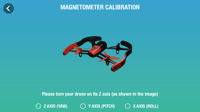
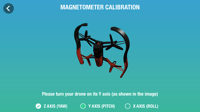
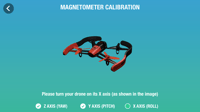
By doing this calibration, the Bebop will have more accurate Yaw, Pitch and Roll.
And, speaking of roll, both of the Parrot drones have a nifty little trick mode where you can perform pre-configured acrobatics. There are four different tricks you can do: back flip, front flip, left flip and right flip. On the flight screen, you can select the type of stunt you want to do and then when you want to execute it, you simply double-tap on the screen and the drone will execute the stunt. It’s so fast that sometimes it is easy to miss it.
Flying & Soaring with Parrot
Either of these Parrot drones will get you off the ground soaring like a bird. The Parrot MiniDrone is a great way to get an introduction to basic drone concepts. The MiniDrone is fun for both kids and adults alike. You can learn the basics of flying and the drone is small enough to be able to pilot it around a home. With the attached hull which protects the blades (as well as people and other objects), it’s probably the best starting point for droning. The Parrot MiniDrone retails for $129.99 and you can get it on Amazon for $128.07 as well as at Target or Best Buy.
The Parrot Bebop takes your droning to the next level, literally. You can do more with it, take better pictures and film HD video, fly further and longer and truly get a more professional experience into droning. Using what you learn as a “child” with the MiniDrone, the Bebop seems to be more of a “parent” experience. The Parrot Bebop retails for $499.99 and is currently on sale for $449.99. You can also get the Bebop at Target or Best Buy and it is available on Amazon currently for $449.99 as well.
Both of these Parrot drones are extremely fun. I’d recommend testing out first with the MiniDrone so that you or your kids can get your “wings” and get used to flying. From there, there is the easy upgrade (using the same familiar piloting software of FreeFlight 3) to the Parrot Bebop…like parent, like child.
Disclosure: I have a material connection because I received a sample of a product for consideration in preparing to review the product and write this content. I was/am not expected to return this item after my review period. All opinions within this article are my own and are typically not subject to editorial review from any 3rd party. Also, some of the links in the post above may be “affiliate” or “advertising” links. These may be automatically created or placed by me manually. This means if you click on the link and purchase the item (sometimes but not necessarily the product or service being reviewed), I will receive a small affiliate or advertising commission. More information can be found on my About page.
HTD says: The Parrot MiniDrone offers a great entry-level introduction to droning for kids and adults alike and the Parrot Bebop bring droning to all new level and heights, literally, as a high-end amateur drone.
